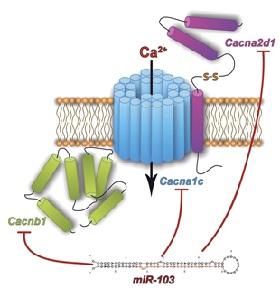River subbasins more depleted than
official figures show
09 April 2024
Published online 6 September 2011

The persistent activation of neurons in the spinal cord causes chronic pain. The Cav1.2-LTC, a transmembrane calcium channel that shuttles ions along a neuron's axon, plays a crucial role in this neuropathy. Now researchers have revealed that the translation of the channel's protein parts is regulated by a certain microRNA, and that boosting levels of this miR-103 relieves chronic pain in animal models.
The research, involving the University of Alexandria in Egypt, shows that miR-103 specifically controls the expression of each of the channel's protein subunits in either direction. Boosting levels of miR-103 suppresses the expression of the calcium channels and relieves chronic pain, whereas suppressing levels of miR-103 boosts expression of the ion channels and leads to pain hypersensitivity. They publish their results in The EMBO Journal.
Imaging studies suggest that miR-103 play an important role in controlling membrane potential and the firing of painful nerve impulses. When neuropathic rats were injected with miR-103, it relieved chronic pain. This points to the therapeutic potential of targeting the translational regulation of these calcium channels.
It is increasingly becoming clear that miRNAs are involved in central nervous system disorders. The researchers claim that this novel translational regulation of the calcium channel offers a new route to modulating neuron excitability and killing pain.
doi:10.1038/nmiddleeast.2011.118
Stay connected: